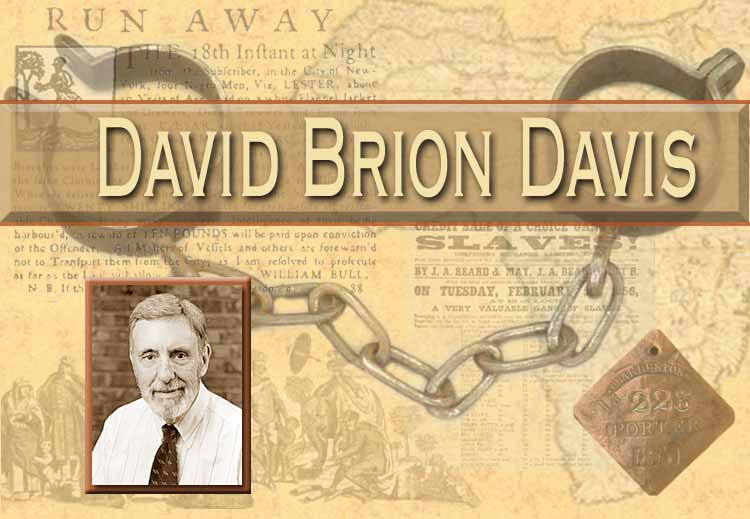Old Labor History was institutional, focusing on political debates, formal labor organizations, worker strikes, and labor leaders. E.P. Thompson’s The Making of the English Working Class (1963) changed this field. His study marked an important intellectual shift, which led scholars to examine capitalism, labor, and slavery from the perspectives on the non-property holding working class, especially in northwestern Europe. The growing curiosity for uncovering the lives of workers and their roles in the industrialized Atlantic (mainly the U.S. North and Europe) breathed new life into the historiographical debates over nineteenth-century free and slave labor. These new investigations on the migrants, the proletariat, indentured servants, and the self-employed opened new avenues for comparison with other labor regimes in the New World, especially with chattel slavery.
By the 1980s, historians of labor, slavery, and anti-slavery started asking new questions about labor systems in the nineteenth-century Atlantic World: how free was “free labor”? Was wage slavery a natural extension of chattel slavery? What were the fundamental differences between slavery and free labor? Such inquiries have shaped recent studies on this subject.
For the purposes of this essay, I will focus on how the works I read in the first half of this semester addressed the topic of “free labor.” More specifically, I will examine how these historians engaged, directly and indirectly, in discussions about the parameters of “free labor” and its application in the British Empire. I will end this blog with a brief examination of how movements towards transnational and global history have further complicated our understanding of “free labor” in the Age of Emancipation.
It is important to start with Robert Steinfeld’s Coercion, Contract, and Free Labor because this study provides a strong foundation for understanding how free labor worked on the ground. In this monograph, Steinfeld debunks the traditional fixed binary of labor: workers were either free (voluntary) or unfree (involuntary). Intellectually, free labor ideology was defined by wages and contracts, while unfree labor (including slavery) was characterized as involuntary and coerced. It should be noted that in the Mighty Experiment, Seymour Drescher traces the origins of this fixed binary back to Adam Smith’s The Wealth of Nations.
All workers, according to Steinfeld, faced various degrees of coercion (slavery being the harshest). He suggests that we think “about labor relations in terms of the degrees of coercive pressures” (Steinfeld, 16). For him the distinction between free and unfree labor is arbitrary, because in reality all workers faced some form of coercion. Understanding how free labor worked on the ground is Steinfeld’s greatest contribution, however. His argument weakens when he suggests that all forms of coercion were attempts to induce and control workers. Steinfeld ignores what Walter Johnson’s River of Dark Dreams explicitly shows: slaveholders and overseers used coercive tactics for other purposes than extracting labor. Although slaveholders and overseers were capitalists, some of them were also sadists, who enjoyed the physical and psychological torture of slaves for other purposes than extracting labor.
Both historians agree, however, that slavery was a form of labor. Johnson’s and Steinfeld’s works also highlight an important fact: on the ground free white workers and slaves were a part of the Atlantic labor system, which was based on coercive tactics. When we look the labor experiences of slaves and wageworkers, the distinctions between free labor and slave labor becomes blurry. Free labor is messy, and when investigating how this labor-system was employed and under what circumstances it becomes apparent that it was less free than many people originally assumed.
Where did this separation between free labor and slave labor develop? Seymour Drescher’s The Might Experiment attempts to answer this question. Following the British abolition of the slave trade in 1807, many anti-slavery activists searched for proof of free labor’s superiority over chattel slavery. Abolitionists started experimenting with free labor in Sierra Leon, Berbice, and Trinidad, granted none of these ventures succeeded. I was also surprised to learn at UCD’s “Ireland, Slavery, Anti-Slavery, and Empire” conference that many Irish laborers were also part of these experiments. Following the abolition of African chattel slavery in the West Indies, British reformers saw a wonderful opportunity for a “mighty experiment” in free labor. Drescher agues that this experiment ultimately failed and led to declining public faith in anti-slavery and free labor by the 1840s.
This decline of British public faith in “free labor” and anti-slavery during the Victorian Era has been the traditional historiographical narrative (notably espoused by Drescher and Howard Temperley). They have suggested that British anti-slavery buckled in the face of new imperialistic ambitions, growing racism, and public indifference. Richard Huzzey’s Freedom Burning challenges this assumption. He makes a compelling case for the continuation of anti-slavery sentiment throughout the Victorian Era. At the heart of British society was a core set of anti-slavery principles, “where opposition to the ownership of humans was the core of the ideology” (8). If we accept Huzzey’s “anti-slavery pluralism” thesis, can we not also argue that free labor was also a part of the anti-slavery core? If British society rejected the ownership of human workers (mainly slaves), then did they not also implicitly support free labor (what nineteenth century ideologists and philosophers posed as the opposite of chattel slavery)?
The answer to this question is complicated. As Steinfeld shows, free labor was never completely free, while other historians have argued that “wage slavery” was a natural extension of chattel slavery. Ideologically, however, British society universally accepted a core set of ideas about free labor. Just like anti-slavery ideology, free labor ideology allowed for differences and nuances, which could be contained beneath the wider British rejection of chattel slavery. Another possible option is to invert Huzzey’s approach (working inside-out, instead of outside-in). Where Huzzey traces a variety of opinions, methods, and definitions to a core anti-slavery ideology, maybe historians should examine how the core ideology of free labor (the opposite of chattel slavery) led to the creation of multiple labor system in the Victorian Era (indentured servitude, contract labor, free labor, wage labor, sharecropping, etc.)?
The movement towards transnational and global history has also dramatically shifted our understanding of free labor ideology. Sven Beckert’s article “Emancipation and Empire,” for example, demonstrates how the British Empire searched for new ways “to extract labor for cotton production, without the use of slaves” (1424), during and following the American Civil War. This search induced new forms of coerced labor (indentured servitude and debt peonage), especially in Brazil, India, and Egypt. This transnational historiographical shift raises new questions about the tensions between the metropolitan ideas of anti-slavery and free labor with the reality of labor needs (and its shortages) in distant colonies.
Were the working classes of England willing to pay higher prices for “free sugar”? The simple answer is no. The victory of free trade over protectionism demonstrates their desire to find the cheapest goods possible. However, Richard Huzzey complicates this narrative by showing how reformers used the banner of “free labor and anti-slavery” to raise public support. Once again, we see the complexity behind the idea of free labor versus the reality of enacting this practice on the ground, especially when we look at how the need for labor in the colonies created a massive push to control laborers through pecuniary and non-pecuniary pressures.
So what is free labor and how different is it from slavery? Although both labor forms share many qualities, there is one significant difference: slaves were human capital. Slaveholders could buy and sell Africans, making large profits, as noted in Walter Johnston’s study. Moreover, slaveowners investments in human chattel were protected through their respective legal systems. Once emancipation occurred, at least in the United States, this fictive capital disappeared. This was not the case for “free labor.” Employers, at differing levels, were dependent on the cooperation and production of their laborers. They did not own them. This difference is critical when trying to parse out the dissimilarities between both labor systems.
Moreover, the movement towards transnational labor history demonstrates that there was no set definition of “free labor,” except that it was the opposite of chattel slavery. Ex-slaveholders, in fact, often exploited the ambiguous definitions of free labor to garners stronger control over their employees. The core tenet of free labor, however, was the complete rejection of owning humans. By rejecting chattel slavery, Britons explicitly and implicitly declared their support for “free labor.”
Seymour Drescher was correct when he argued that mass mobilization was the key to the success of British anti-slavery. I argue, however, that free labor was also the key to extending anti-slavery sentiment into the Victorian Era. This labor system offered an answer. An answer to what would come next after emancipation removed a labor system that was centuries old. As scholars continue to follow in the footsteps of E.P Thompson, we are forced to rethink about what “free labor” meant and how it was different from chattel slavery.



